A fundamental purpose of the Gallup New Deal Art virtual museum is to unify a disparate and fragmented collection, which includes everything from paintings to benches to buildings, assembled over time in a piecemeal fashion and currently split among locations.
Gallup’s New Deal art collection is housed in six separate locations throughout Gallup and is under the purview of three separate entities: McKinley County, the City of Gallup, and Gallup McKinley County Schools.
Note: Management of Gallup’s New Deal art collection is evolving, and the information on this page will be updated as needed. Please check back to stay up-to-date with developments.

The Octavia Fellin Public Library has over thirty paintings, drawings, and prints, one sculpture, and two trasteros (cabinets)—all publicly displayed.
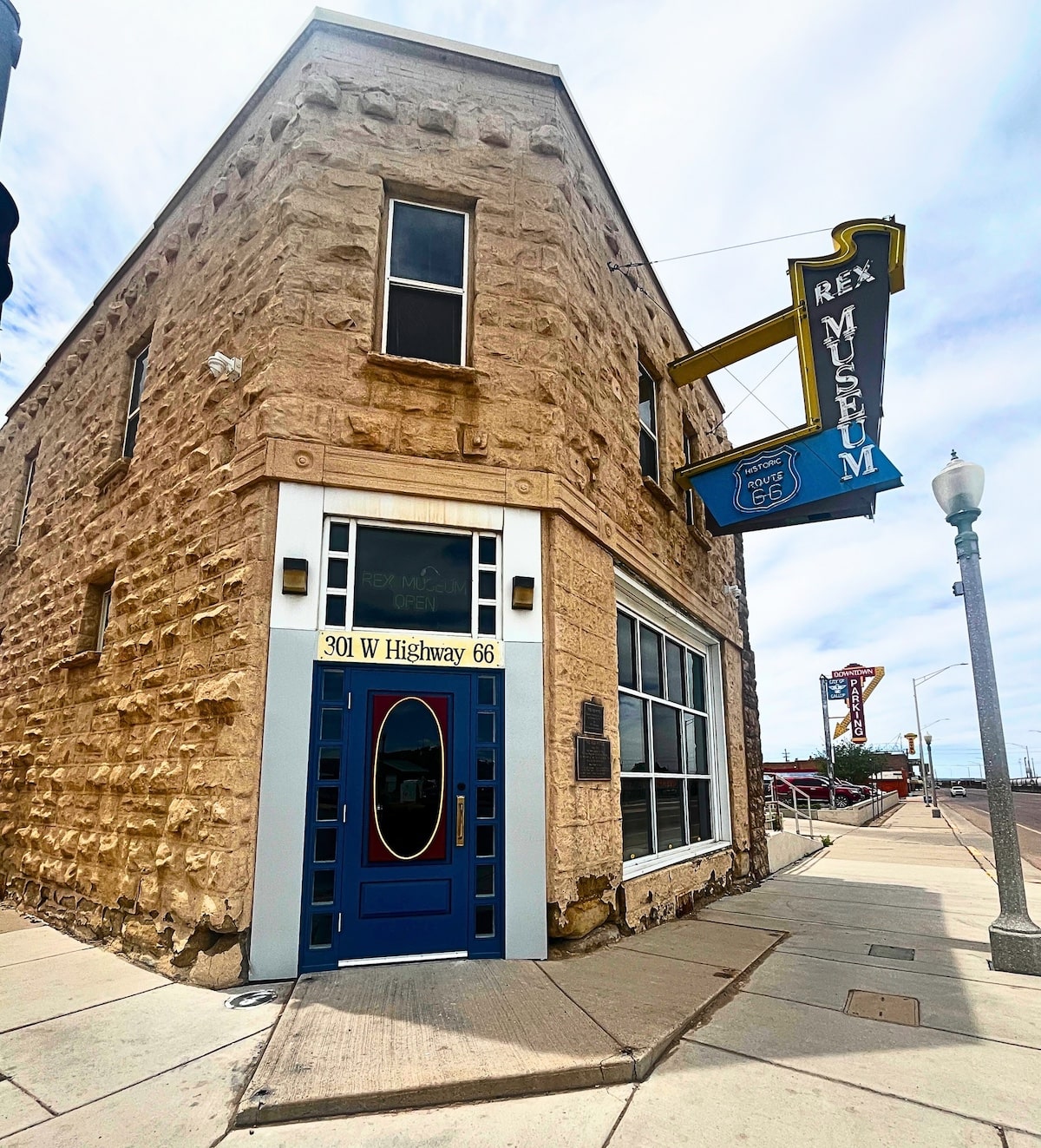
Sixteen prints from the Navajo Blanket Portfolio are in collections storage, but will be on view at the Gallup Museum from spring 2025 to fall 2025 as part of a special exhibition on commercial silkscreen printing as a New Deal endeavor.
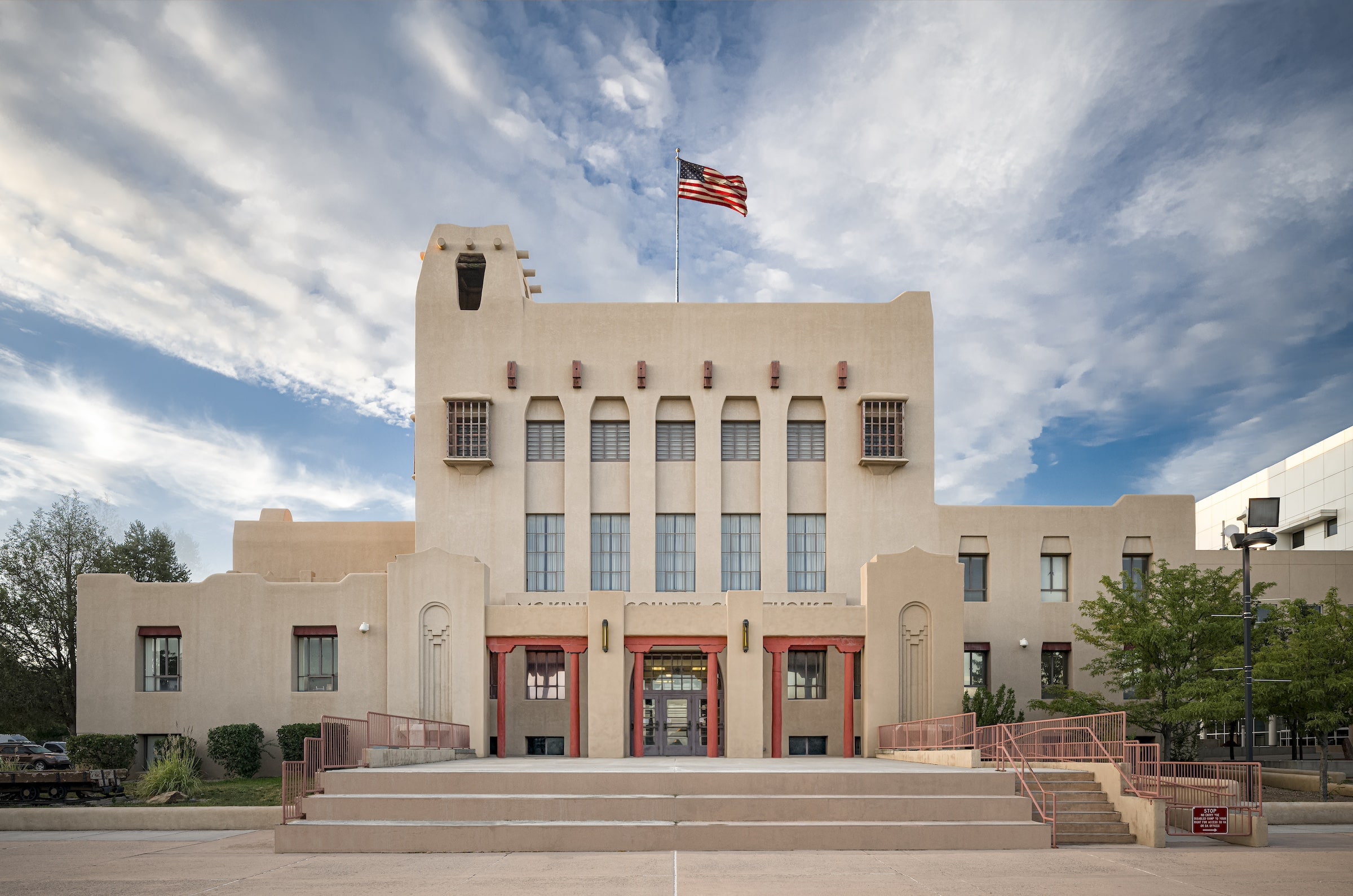
The historic McKinley County Courthouse was built through the Public Works Administration in 1938. The first floor (currently utilized as the District Attorney’s office and only publicly accessible by request) has been largely preserved in its original form, with tinwork light fixtures, tilework, and wall paintings. The second floor houses the Eleventh Judicial District Court. Nineteen paintings are displayed in the courtroom lobby (which is relatively publicly accessible), and the courtroom itself (only publicly accessible by request) features a 2,000-square foot mural by New Deal artist Lloyd Moylan. Additionally, McKinley County has eighteen pieces of furniture (six benches, eight chairs, two end tables, one trastero or cabinet, and one desk) in storage (not on public view).

A series of seven large-scale paintings by J. R. Willis hangs in the library of Gallup High School (only publicly accessible by request). Gallup McKinley County Schools also stewards three paintings by Edgar Alwin Payne (not currently on public view).
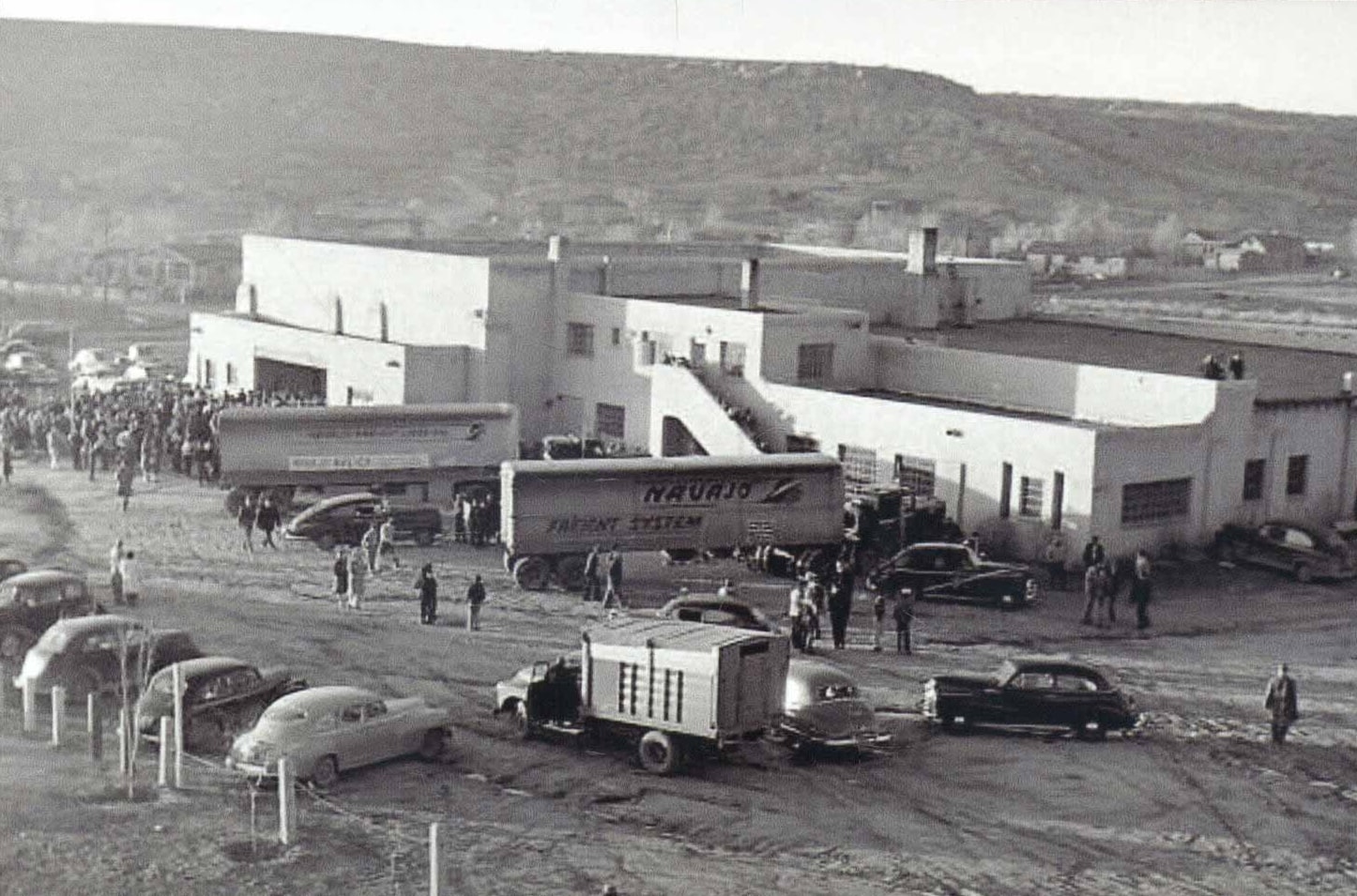
Gallup’s historic National Guard Armory (pictured here in the early 1940s) was built in 1941 through the New Deal Armory Program, a joint effort of the Public Works Administration and Works Progress Administration between 1933 and 1942.

Gallup’s historic post office (pictured here in the early 1930s) was not technically constructed through a New Deal program; it was built by the Treasury Department in 1933. Through the Civil Works Administration, artist Warren Rollins was commissioned to create three paintings for the building’s interior. Those paintings are now located in the Santiago E. Campos United States District Court in Santa Fe, NM.
Very few records from New Mexico’s and Gallup’s New Deal art programs still exist. At the onset of World War II, state and local programs were ordered to destroy their records because the wartime federal government lacked the capacity to ship the materials to Washington, DC, to be archived. There are only two dozen objects for which researchers have been able to conclusively determine (on the basis of preserved New Deal program artwork labels, New Deal program administrator correspondence, and/or newspaper reports) how they entered the collection. That information is included in applicable artwork labels throughout the Virtual Museum.
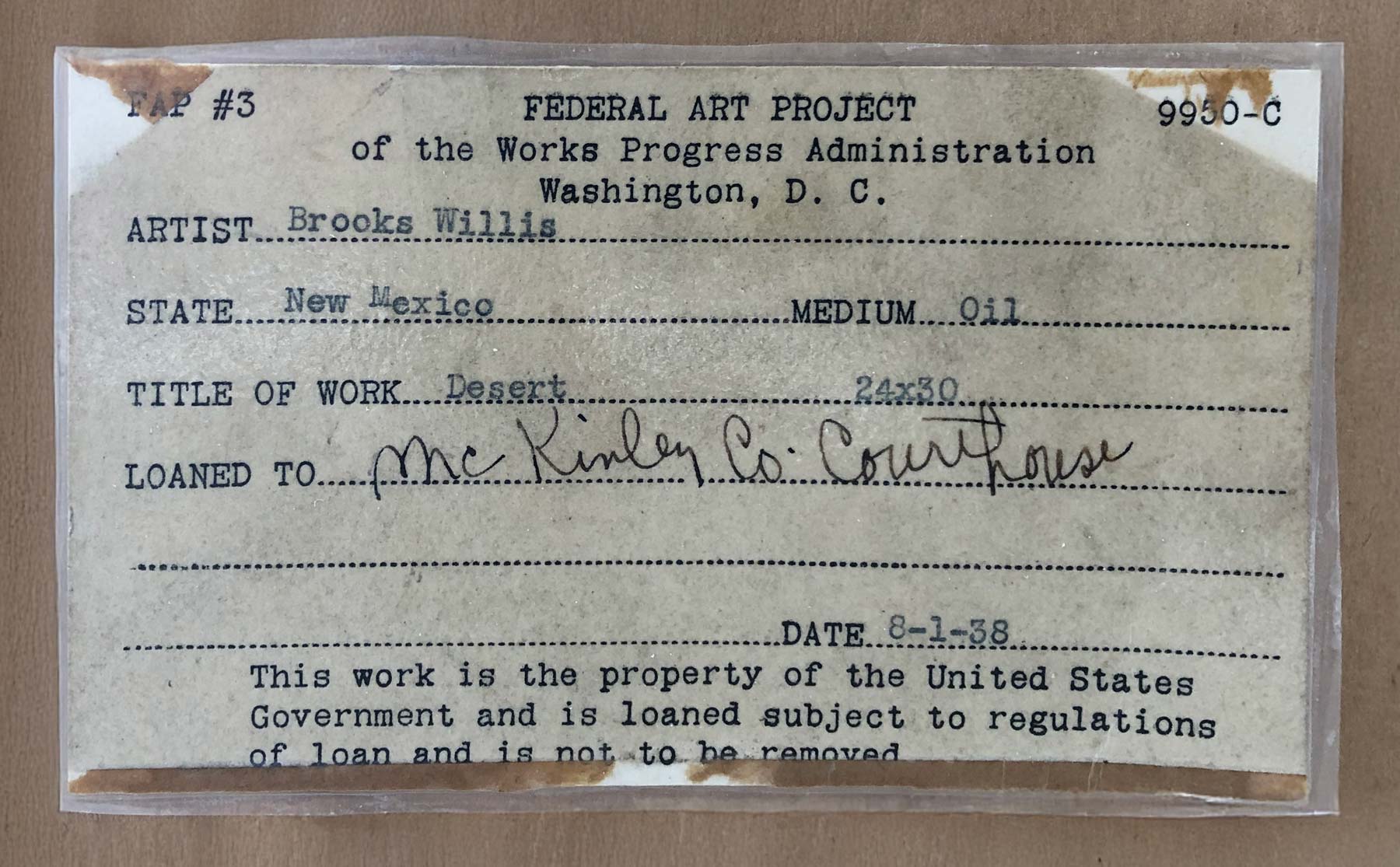
A Federal Art Project label for Desert by Brooks Willis, an artist employed to create artworks through the program. Artworks loaned or allocated to public institutions and entities were identified by paper labels adhered to their backsides.
Most artworks in the collection are by artists who were on the payrolls of New Deal art programs. Essentially, the New Deal hired and paid artists to fulfill set quotas of artworks (see “Artist as Workers” for more information). The available documentation suggests that the majority of Gallup’s New Deal artworks were created by artists employed through New Mexico’s Federal Art Project and then allocated to or purchased for public buildings, as is the case with Desert by Brooks Willis.
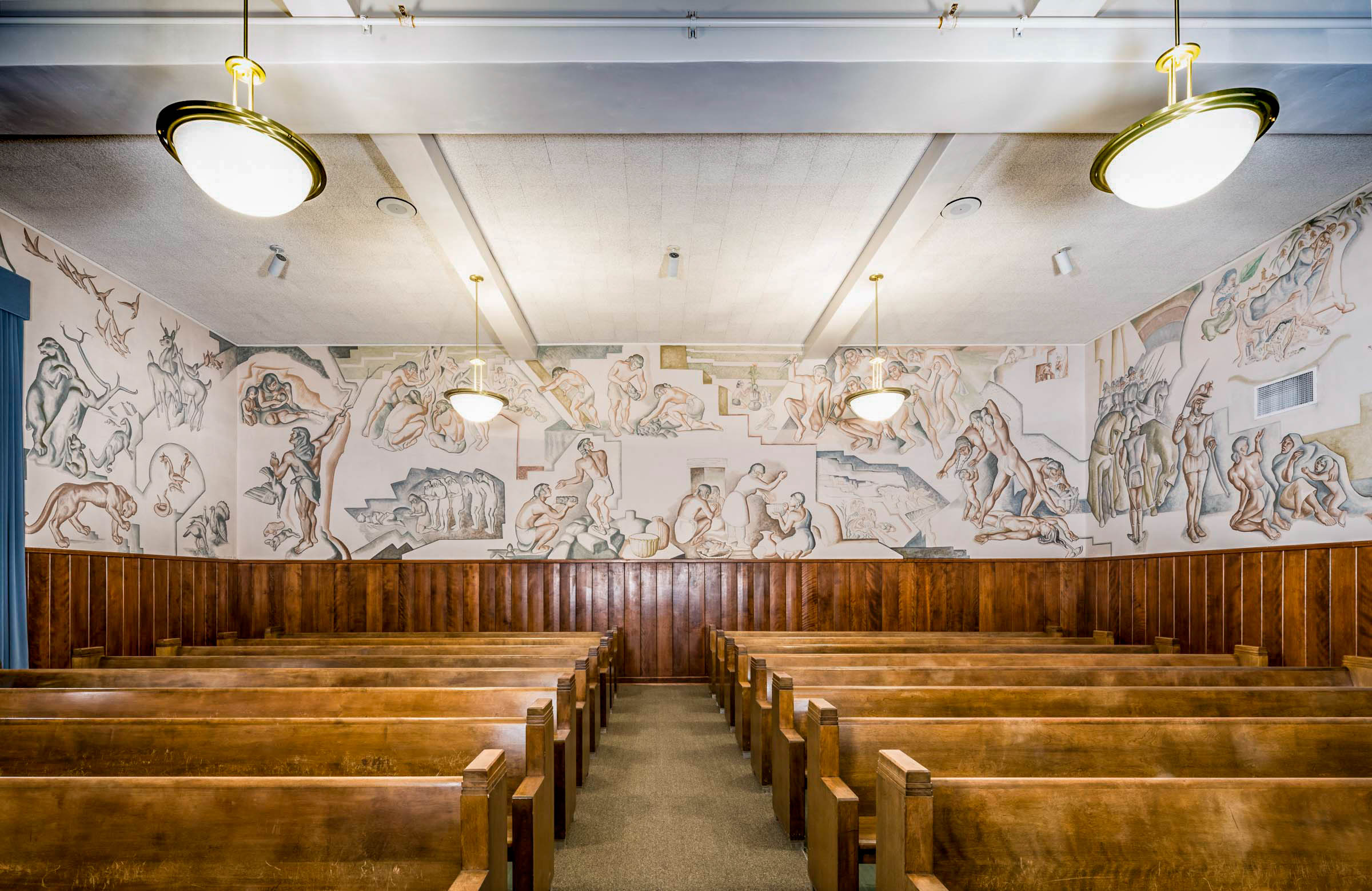
View of the west wall of Lloyd Moylan’s 1940 McKinley County Courthouse courtroom mural, likely commissioned through the New Mexico Federal Art Project.
Several artworks are known to have been commissioned and paid for directly by specific New Deal art programs, either for a particular purpose or a particular location/public institution(s). Examples include:

A handwritten mailing label for Enchanted Mesa by Albert Lorey Groll, an artwork donated by the NYC-based artist to the Gallup Art Center in 1941.
A few artworks in the collection, like Albert Lorey Groll’s Enchanted Mesa, are known or presumed to have been donated by their creators to the Gallup Art Center. These artist–donors were East Coast–based, established artists with no record of employment with New Deal art programs.
Subscribe to our newsletter to get GNDA updates
Gallup and McKinley County are situated on the ancestral and current homelands of the Diné and Ashiwi peoples.
Gallup’s New Deal art collection consists of over 120 objects created, purchased, or donated from 1933 to 1942 through New Deal federal art programs administered by President Franklin D. Roosevelt to support artists during the Great Depression.
The Gallup New Deal Art Virtual Museum features three types of exhibits, combining traditional and non-traditional approaches to illuminate academic, creative, and individual understandings.
Gallup’s New Deal art collection includes works by a demographically, professionally, and stylistically diverse group of named and unnamed artists.

Image Use Notice: Images of Gallup’s New Deal artworks are available to be used for educational purposes only. Non-collection images are subject to specific restrictions and identified by a © icon. Hover over the icon for copyright info. Read more